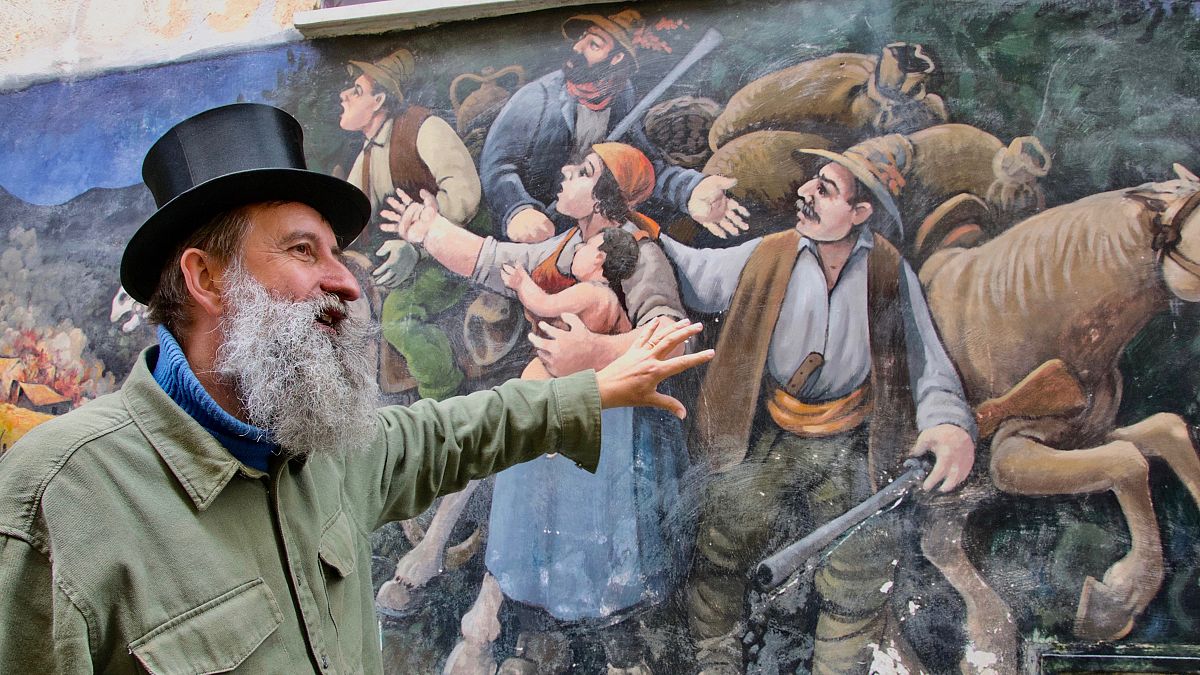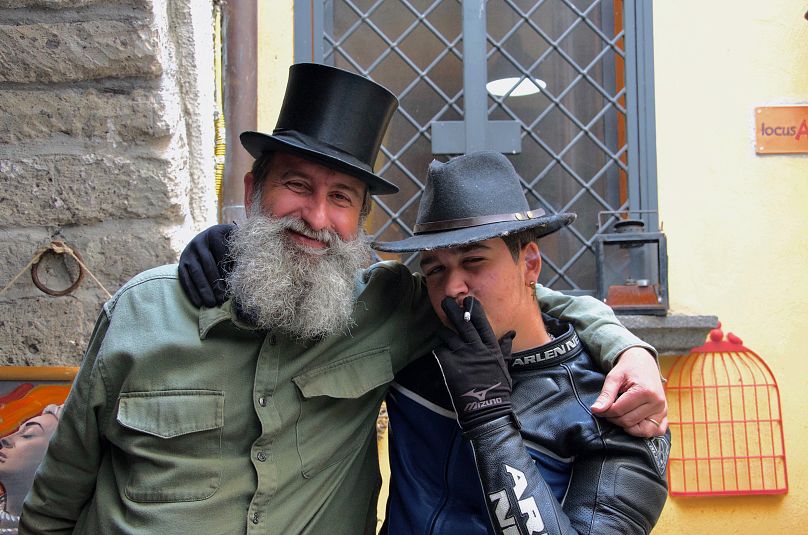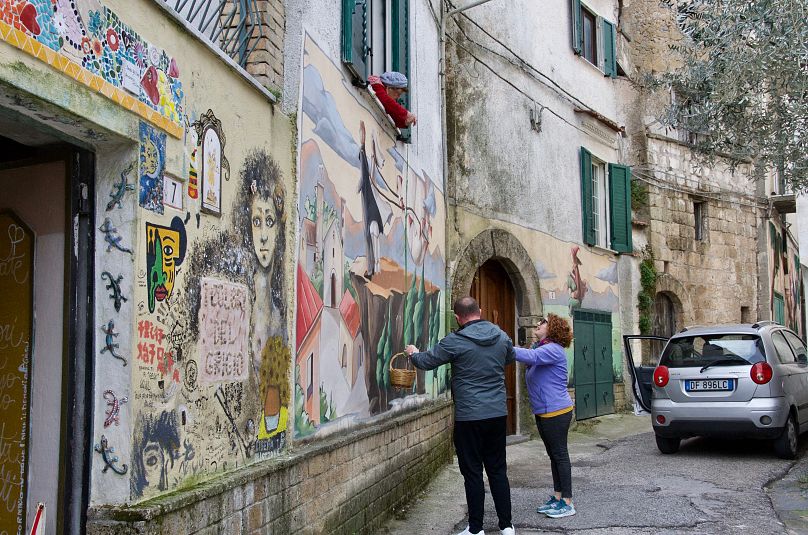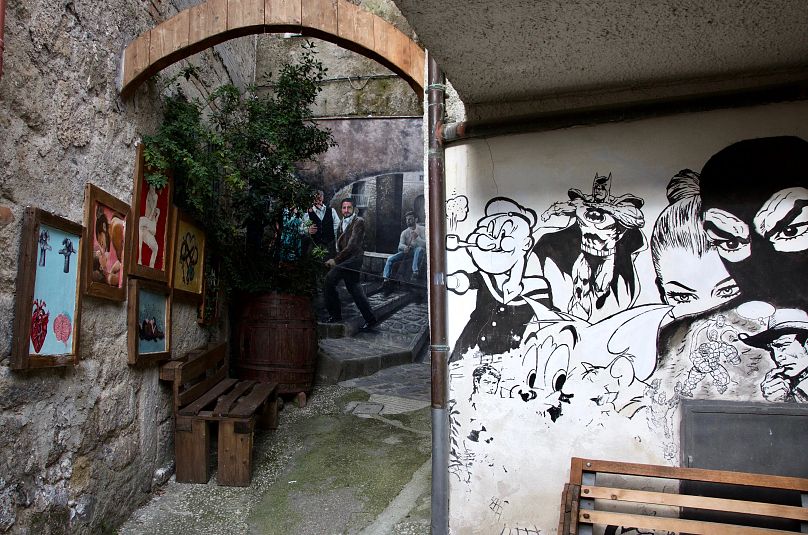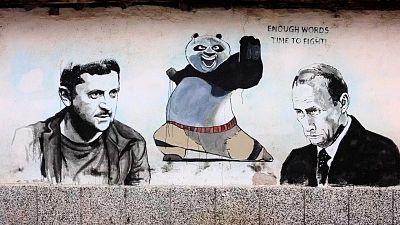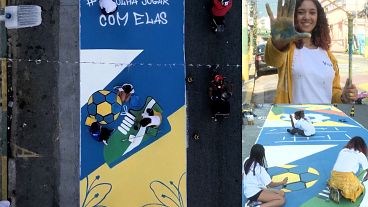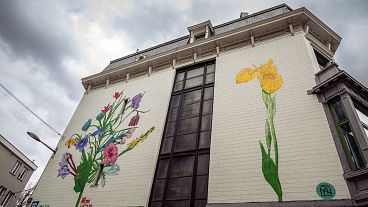To celebrate World Mental Health Day, the international day for global mental health education, awareness and advocacy against social stigma, we bring you the story of Giovanni Casale, who came up with the idea of transforming his ancestral town into an art therapy project for his son.
A handful of American and Neapolitan tourists stand on the dirt side of a road overlooking the valley below them. Giovanni, a flamboyant 57-year-old is in the middle of the road wearing a collapsible black top hat and a green military jacket. He’s about to begin the tour of his art village.
In-between the mumbling of the tourists, someone screams and jumps out of the way of something on the ground. Someone exclaims “Oh, it’s just a worm, relax.”
Giovanni lunges forward and gets on his hands and knees, and says: “No, no, no, don’t touch it!”
He starts to pretend to kiss the worm and explains that worms are good for not just the town but nature as a whole.
“Does anybody want to kiss him? Maybe, if you’re lucky, you can turn into a princess.”
Giovanni Casale is the founder of a unique art project in the foothills of the Apennine mountain range in the southern Italian region of Campania. Over the past several years, he and the many artists he has invited to his adopted village have turned this once grey and depopulated place into an outdoor museum. His inspiration? Partly to bring back life to the village where his family came from, but also as to create art therapy for his son Pasquale, who suffers from encephalitis.
Encephalitis is a condition that causes brain swelling and most commonly effects young children and the elderly. Its causes aren’t always known, but can be caused by bacterial, fungal or viral infections, as well as issues stemming from a person’s immune system.
Pasquale has undergone multiple surgeries as part of his treatment. This resulted in him losing some of his cognitive abilities and a spark that his father said was once there.
After moving to Valogno more than a decade ago, Giovanni noticed that Pasquale was slowly regaining some of his spark. He recalls his son being more mentally stimulated by not just by being in nature but also the art he was creating.
“The brain is grey” Giovanni explains. “The left part of [Pasquale’s] brain that had atrophied was once grey and what we did was we coloured it with art.”
And with that, Giovanni decided to move full speed ahead with his project to turn Valogno into an artist sanctuary.
A unique open air museum
As the art project grew, so did its effects.
Valogno sits at the northern tip of the Campania region of southern Italy. About 25 kilometres south of the village is an area of Campania that has become famous over the past few decades for the illegal dumping of toxic waste that the locals have dubbed ‘the land of fires.’
Valogno’s proximity to this area is not lost on Giovanni. Ecological preservation became a main tenant of his project, and he wanted to set Valogno as an example of how rural towns in the province can live and respect the nature around them.
“One of our goals was to turn this area into the land of the rainbows and not the land of fires.”
Rainbows are one of the main recurring themes in the paintings and murals across the village, as Giovanni wanted it to represent the colour that was brought into his son’s life - both literally and metaphorically.
Art as therapy
The dozen artists that have participated in transforming Valogno into the place it is today tell their own stories.
There are murals of Italy’s first female director of a major newspaper; guerrilla fighters who fought against the annexation of the south during Italy’s controversial unification process; symbols that remind one of Valogno’s resident artists, Alfredo Troise, of the struggles he faced growing up with mental illness.
Alfredo, an artist from Naples, has Tourette's syndrome. He says that when he was growing up, he felt judged by the people around him, even those who were supposed to be close to him. One of the ways that he expresses himself in his art is with the depiction of eyes, which he describes as the judgmental eyes of those who judged and mistreated him.
Despite its size, Valogno has had a measurable effect on not just Giovanni and his family, but also those who decide to live and work in the village and those who decide to make the trek up the mountain to visit.
For some like Alfredo, the opportunity to express oneself through art in Valogno not only improves the lives of those around him but also himself.
“Some people say art is therapy,” Alfredo explains. “For me, art isn’t just therapy. It’s the cure.”
